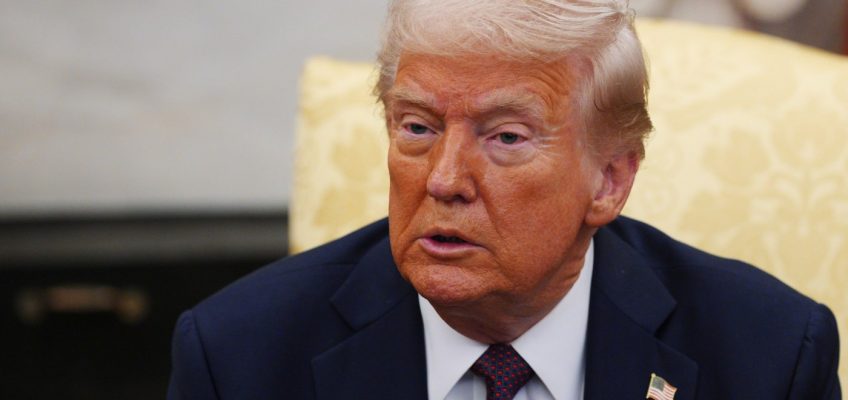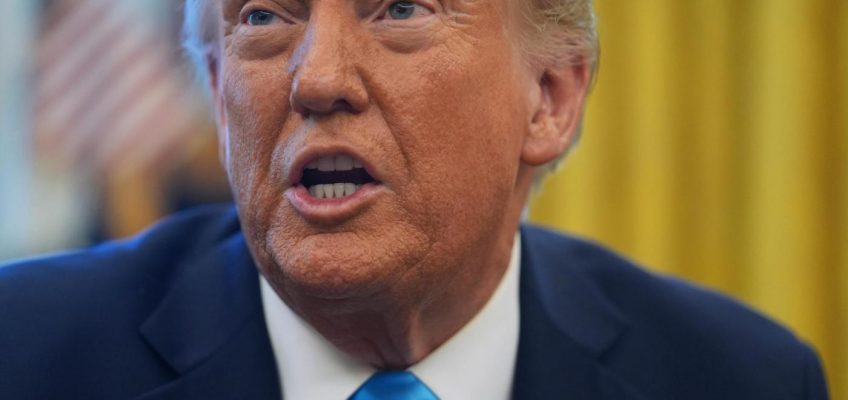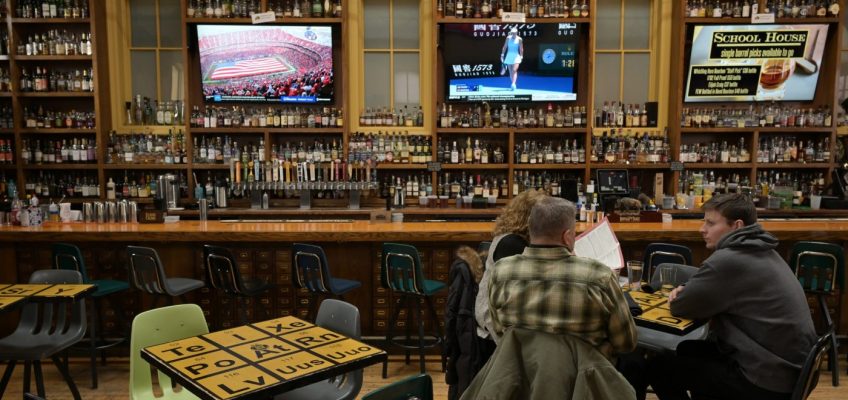By ZEKE MILLER, JOSH BOAK and ROB GILLIES, Associated Press
WASHINGTON (AP) — President Donald Trump said Monday that 25% taxes on imports from Mexico and Canada would start Tuesday, sparking renewed fears of a North American trade war that already showed signs of pushing up inflation and hindering growth.
Related Articles
Trump’s tariff tactics carry higher economic risks than during his first term
Federal workers face second Musk deadline to explain their work last week
Trump’s speech to Congress comes as he wields vast power almost daring lawmakers, courts to stop him
Melania Trump says it’s ‘heartbreaking’ to watch teens grapple with the fallout from revenge porn
Trump slams Zelenskyy for saying the end of the Russia war ‘is still very, very far away’
“Tomorrow — tariffs 25% on Canada and 25% on Mexico. And that’ll start,” Trump told reporters in the Roosevelt Room. “They’re going to have to have a tariff.”
Trump has said the tariffs are to force the two U.S. neighbors to step up their fight against fentanyl trafficking and stop illegal immigration. But Trump has also indicated that he wants to even the trade imbalance with both countries as well and push more factories to relocate in the United States.
His comments quickly rattled the U.S. stock market, with the S&P 500 index down 2% in Monday afternoon trading. It’s a sign of the political and economic risks that Trump feels compelled to take, given the possibility of higher inflation and the possible demise of a decades-long trade partnership with Mexico and Canada.
Yet the Trump administration remains confident that tariffs are the best choice to boost U.S. manufacturing and attract foreign investment. Before Trump’s statement on tariffs in response to a question on Tuesday, Commerce Secretary Howard Lutnick said that the c omputer chipmaker TSMC had expanded its investment in the United States because of the possibility of separate 25% tariffs.
In February, Trump put a 10% tariff on imports from China and reemphasized on Monday that the rate would be doubling to 20% on Tuesday.
Trump provided a one-month delay in February as both Mexico and Canada promised concessions. But Trump said Monday that there was “no room left for Mexico or for Canada” to avoid the steep new tariffs, which were also set to tax Canadian energy products such as oil and electricity at a lower 10% rate.
“If Trump is imposing tariffs, we are ready,” said Canadian Foreign Minister Mélanie Joly. “We are ready with $155 billion worth of tariffs and we’re ready with the first tranche of tariffs, which is $30 billion.”
Joly said Canada has a very strong border plan and explained that to Trump administration officials last week. She said the diplomatic efforts are continuing. She spoke after Trump made his comments Tuesday.
Mexico President Claudia Sheinbaum went into Monday waiting to see what Trump would say.
“It’s a decision that depends on the United States government, on the United States president,” Sheinbaum said ahead of Trump’s statement. “So whatever his decision is, we will make our decisions and there is a plan, there is unity in Mexico.”
Both countries have tried to show action in response to Trump’s concerns. Mexico sent 10,000 National Guard troops to their shared border to crack down on drug trafficking and illegal immigration. Canada named a fentanyl czar, even though smuggling of the drug from Canada into the United States appears to be relatively modest.
As late as Sunday, it remained unclear what choice Trump would make on tariff rates. Lutnick told Fox News Channel’s “Sunday Morning Futures” that the decision was “fluid.”
“He’s sort of thinking about right now how exactly he wants to play it with Mexico and Canada,” Lutnick said. “And that is a fluid situation. There are going to be tariffs on Tuesday on Mexico and Canada. Exactly what they are, we’re going to leave that for the president and his team to negotiate.”
Treasury Secretary Scott Bessent said Mexico has also offered to place 20% taxes on all imports from China as part of talks with the United States.
Bessent told CBS News on Sunday that China would “eat” the cost of the tariffs, instead of passing them along to the U.S. businesses and consumers that import their products in the form of higher prices.
But companies ranging from Ford to Walmart have warned about the negative impact that tariffs could create for their businesses. Similarly, multiple analyses by the Peterson Institute for International Economics and the Yale University Budget Lab suggest that an average family could face price increases of more than $1,000.
Trump also plans to roll out what he calls “reciprocal” tariffs on April that would match the rate charged by other countries, including any subsidies and and value added taxes charged by those countries.
The U.S. president has already announced the removal of exemptions from his 2018 tariffs on steel and aluminum, in addition to tariffs on autos, computer chips, copper and pharmaceutical drugs.




